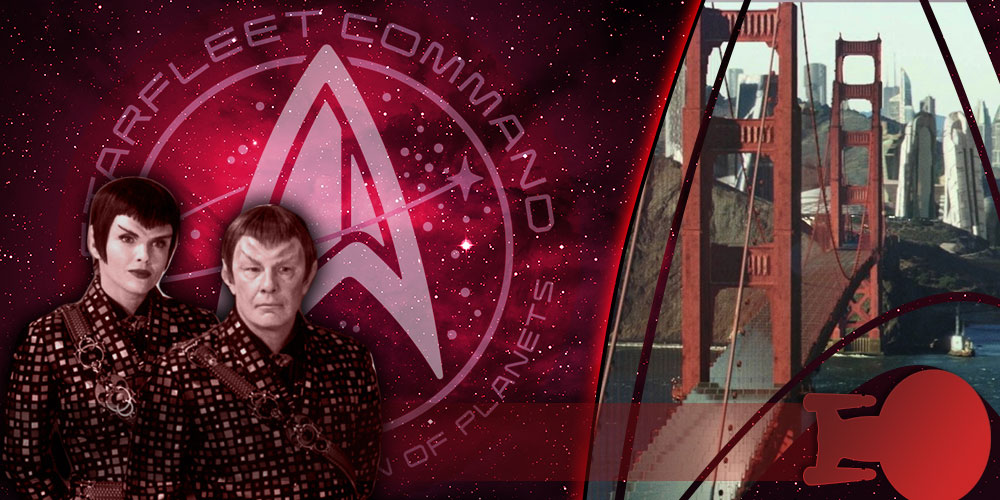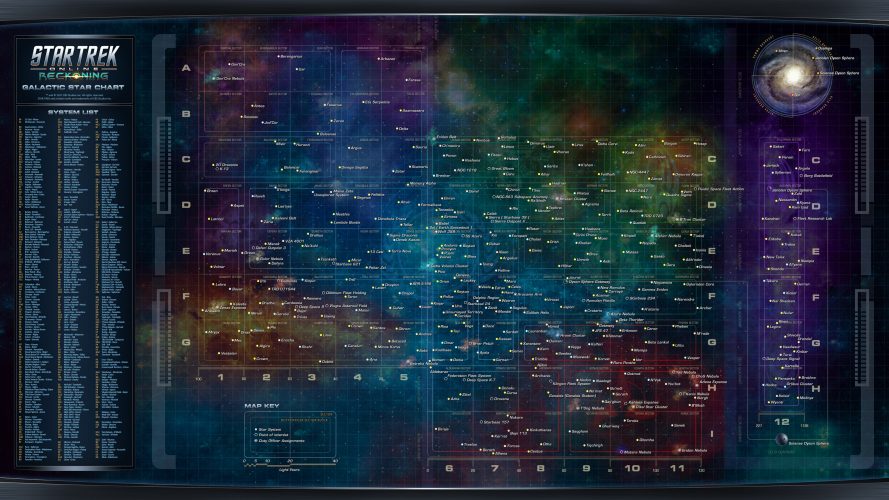When Star Trek: Nemesis was released in 2002, it served as the canonical endpoint of the Star Trek timeline (with one exception, more on that later), with the action of the film taking place in the year 2379, three years following the end of the Dominion War and a year after the return of the Starship Voyager. The film saw many interesting developments to existing characters, such as the marriage of Will Riker and Deanna Troi, their subsequent transfer to the U.S.S. Titan, and Kathryn Janeway’s well-deserved promotion to Admiral, but it also set up storylines that would not be resolved in-canon for nearly twenty years, such as the political fallout of Shinzon’s coup within the Romulan Star Empire, as well as the death of Data.
At the time, the Trek series in production was Enterprise, which took place over a century before The Original Series, so to sate the fandom’s appetite for more stories with established characters, the novel series took the lead in exploring the post-Nemesis universe. Elements of the novels would be utilized by Cryptic Studios, the developers of Star Trek: Online, as they fleshed out the history leading up to the game’s starting point in the year 2409.
Last year, the world was gifted the first season of Star Trek: Picard, the first modern Trek series to take place after Nemesis, which interpreted that twenty-year gap in a very different manner than the novels and STO had. In this series, I’ll examine how the novels and STO wrote this previously unseen era in Trek history using Beta Canon sources, how Picard established the “real” story of that era using Alpha Canon sources, and how the upcoming Star Trek: Coda trilogy (Order HERE) of novels could reconcile the literary canon with that of the shows. I’m primarily looking at events that affected established characters and the political state of the galaxy.
NOTE: The 2009 Star Trek film was *technically* the last point in the Prime Timeline before 2020, but that element of the film was portrayed as a flashback explaining how and why Spock-Prime ended up in the Kelvin Timeline. As pivotal as that plot point was for the film and the canon to follow, I’m not including it as a separate interpretation of the era as STO fully acknowledged it and the novels have yet to progress to 2387.
Star Trek: Online
In the lead up to the game’s release in 2010, Cryptic Studios released a series of posts on their website titled The Path to 2409 which filled in much of the history between Nemesis and STO, a thirty-year gap, and in doing so set the stage for the game’s initial conflict between the Federation and a resurgent Klingon Empire. For the purposes of this article, I’ll concentrate on the period between 2379 and 2399, the starting point for Star Trek: Picard, but if you haven’t read The Path to 2409 and are at all interested in the lore of STO, I can’t recommend it enough.
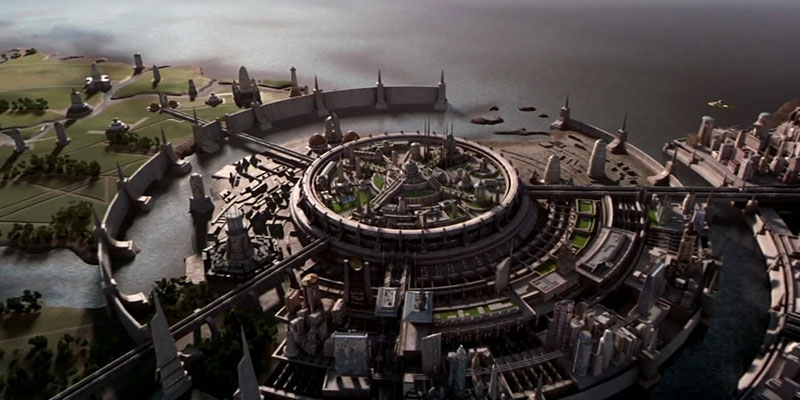
The Romulan Star Empire
This version of the timeframe begins with the immediate implications for the Romulan Star Empire following Shinzon’s coup, which left the Romulan Senate dead. The new Praetor, Tal’Aura, one of Shinzon’s co-conspirators, struggles to maintain the integrity of the Empire against the Remans’ demands for increased rights and freedoms, as well as the growing power of Commander Donatra, who has the support of the bulk of the Romulan Fleet, a major tool of domestic policy. In 2381, Proconsul Tomalak formed a blockade of Remus in response to skirmishes between loyalist Romulan ships and Reman forces. This stretched the fleet thin, providing an opening for forces loyal to Donatra to seize several agricultural worlds from the Empire and form the Imperial Romulan State, a new nation in opposition to the Empire with Donatra as Empress.
Things get worse in Romulan space, as Tal’Aura reforms the political system giving more authority over the Senate to the praetor, to the detriment of the nobility; she is also forced to accept Federation help after the loss of agricultural worlds to the Imperial Romulan State pushed the Empire’s resources to their limits. The continuing fluctuation in Romulan politics also provides an opening for Ambassador Spock and his unification movement to push for representation in the Senate. Meanwhile, the weakening of the Romulan fleet lets the Klingons seize several disputed border systems, including Khitomer.
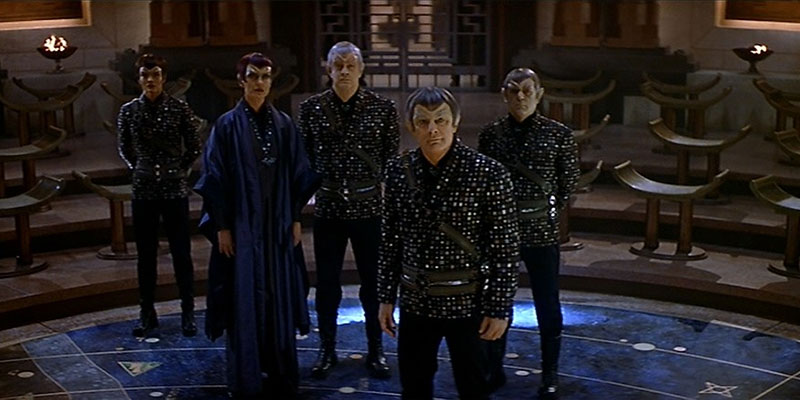
By 2384, Romulan space appears primed for all-out civil war, while relations between the Federation and the Klingons are strained following the seizure of Khitomer. Skirmishes between the two Romulan polities continue; following one such battle wherein he was defeated, Tal’Aura replaced Tomalak with Sela as her proconsul. As the political and economic situation in the Star Empire continued to deteriorate, Tal’Aura reluctantly agreed to open negotiations with the Imperial Romulan State; soon after, she was assassinated. The Romulan conflict comes to an uneasy end in 2385 as the Imperial Romulan State agrees to rejoin the Star Empire, with Donatra in command of the fleet and Senator Chulan as the new praetor. Even with a new praetor, Donatra retains a great deal of power and influence, offering the Remans full citizenship and representation in the Senate. Both sides in the now-concluded conflict accept this new peace, but many Romulans continue to see the Remans as a lower tier in society despite their true status.
In 2387, everything changed for the Romulans, and the political situation in the Alpha and Beta Quadrants was forever altered.
A Romulan Mining Guild ship detected massive fluctuations in the star Hobus, located near Romulus. Soon after, Ambassador Spock appeared before the Romulan Senate to warn of the danger of Hobus’ inevitable supernova and pleads with them to work with the Vulcans to find a way to stop the supernova, as Spock theorized it could be the start of a chain reaction which could destroy Romulus itself, in addition to countless other worlds should the blast wave spread. The Senate refuses, so Spock returns to Vulcan to discuss the crisis with Ambassador Jean-Luc Picard, who had retired from Starfleet in 2385 at the request of President Nanietta Bacco to become Federation ambassador to Vulcan. Both appeal to the Vulcan Science Academy to help, but they refuse, so Spock and Picard ask Geordi LaForge to lend them the experimental starship Jellyfish so Spock can deliver a payload of red matter to Hobus to negate the supernova’s effects via an artificial singularity.
Meanwhile, Donatra is invited to the new Reman colony on the planet Crateris. While returning to Romulus, the Valdore detected a massive stellar disturbance inbound to the home system; shortly after, contact with the warbird was lost.
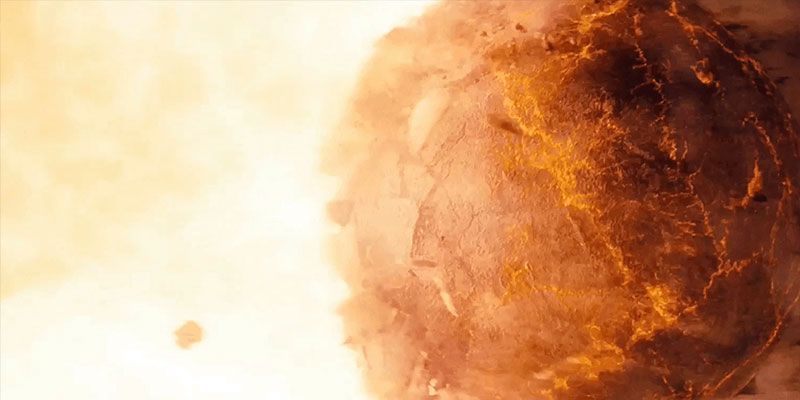
The Senate finally agrees to begin evacuating the population of Romulus, but the military estimates the complete evacuation would take six weeks, even with the entire fleet helping. Twenty-seven hours later, Hobus goes supernova, destroying Romulus and Remus and killing billions.
Starfleet orders all available ships to cross the Neutral Zone and assist with relief efforts. Chancellor Martok also sends a fleet led by General Worf. Ships from both the Federation and the Klingon Empire fall under attack by the Narada, a heavily modified Romulan mining ship captained by Nero. Soon after, the U.S.S. Enterprise-E observes the Hobus supernova become contained by an artificial singularity, ending a potentially catastrophic threat to the galaxy. The Narada and the Jellyfish disappeared at roughly the same time; Starfleet believes both ships were destroyed by the singularity.
The destruction of Romulus and Donatra’s disappearance throws the Star Empire into complete disarray, with multiple worlds claiming their ruling councils as the new Senate. The Federation attempts to mediate between the factions forming, but the factions cannot even agree on a location for a potential conference and such plans are scrapped. Admiral Taris emerges as a possible new leader for what remains of the Romulan state, but her top priority is maintaining the readiness of the fleet for the inevitable invasions by hostile powers looking to take advantage of the deteriorating political situation.
Federation ships are met with varied reactions to their offers of assistance to Romulan colonies, ranging from welcoming to outright hostility. Allies of the Federation also provide aid, even the Cardassian Union, itself about a decade out from the devastating end of the Dominion War. The Klingons, however, refuse to give any aid, as the fleet sent to Romulan space at the outset of the crisis was in response to attacks from the Narada. In the words of Chancellor Martok, “The Klingons will offer no treaty, no aid, and no hand that is not holding a blade.” Relations between the Federation and the Klingons reach their tensest point in 2389 after Starfleet deploys ships along the Klingon-Romulan border to prevent further Klingon incursions, resulting in a few skirmishes between the two sides.
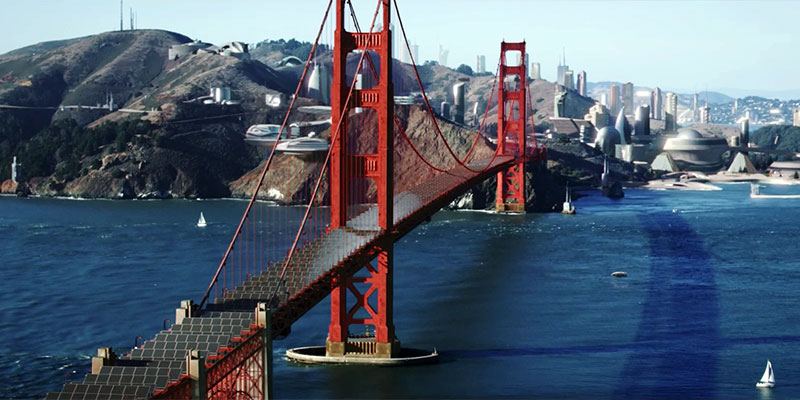
The United Federation of Planets
Domestic issues within the Federation also serve to dampen the relief efforts. When word of the Vulcan Science Academy having had knowledge of the Hobus supernova but taking no action becomes widespread, a massive outcry follows, with seventeen independent worlds and two Federation members recalling their ambassadors to Vulcan in protest. Soon after, the Federation Council authorizes an investigation into the Academy’s red matter research program. President Bacco publicly appeals to member worlds not to ostracize the Vulcans, then spends most of 2389 working with Ambassador Picard to normalize relations between Vulcan and the rest of the member worlds while the investigation continues.
By the end of 2389, the Federation Council publicizes the results of its investigation into the Vulcan Science Academy, determining that the Academy may not have understood the full extent of the threat the Hobus supernova presented, as the explosion was more widespread and violent than any recorded supernova and its chain reaction could never have been predicted. The Council recommends further study into the supernova and criticizes the Academy for experimenting with red matter without consulting Federation authorities. In response, Councilor T’Los of Vulcan announces that all the red matter in the Academy’s possession was aboard the Jellyfish, thus no further research could be conducted; she then resigns from the Federation Council after expressing the grief the Vulcans shared with their Romulan cousins.
Without a single, strong leader, the Romulan colony worlds begin to form their own alliances, with some worlds reaching out to the Federation for protection. One such world, Talvath, even opened talks with the Federation which could result in their application for formal membership. Analysts within multiple powers took this as the first sign of the eventual dissolution of the Romulan Star Empire. Meanwhile, Admiral Taris continues her work reforging the fleet into a new organization, bringing hope to many Romulans that their empire may yet endure.
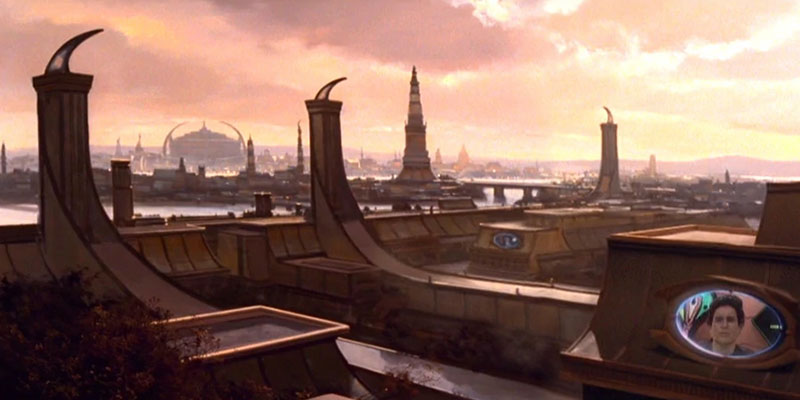
The Cardassian Union
The slow collapse of the Romulan Empire is not the only major galactic event during this timeframe. In the Alpha Quadrant, as relations between the Federation, Bajor, and the Cardassian Union improve following the Dominion War, Federation attempts to help Cardassia recover, such as a major agricultural restoration project spearheaded by Keiko O’Brien, are met with resistance from more hawkish elements of Cardassian society while supported by progressive groups such as one led by Elim Garak. O’Brien’s Andak Project successfully converts large amounts of a barren desert on Cardassia into arable land which could feed millions, increasing the Federation’s influence on Cardassia as well as Garak’s.
In 2381, Bajor led a group of worlds demanding the trial of Cardassian officials for war crimes connected to the occupation of Bajor and the Dominion War. The next year, hundreds of Cardassians in the crosshairs of this coalition mysteriously disappear, resulting in Bajor accusing Cardassia of hiding them to keep them from being tried. The stonewalling of Bajor’s attempts at justice did not deter them from fast-tracking their renewed application for Federation membership in 2384, resulting in mass celebrations across the planet. In 2386, a new agreement was reached between the Cardassians and the Federation which resulted in the disbanding of the Cardassian military, allowing those resources to go toward the restoration efforts on Cardassia. Starfleet takes up security duties within Cardassian space. The agreement convinces Bajor to end its attempts at charging Cardassians with war crimes.
In 2389, the Cardassians voted to replace their Reconstruction Committee with a democratically elected congress. Two groups soon dominate the election: a hardline group that wants to withdraw from the recent treaty with the Federation, and Elim Garak’s civilian coalition. Garak’s group narrowly wins the election and reinstates the Detapa Council as the Union’s legislative body; soon after, the Council makes the controversial decision to send ships to help the Romulan relief efforts against popular opinion, made worse after the Federation cut funding for Cardassian reconstruction. Garak defended the Council’s decision, insisting that the way Cardassia had conducted business in the past had led the people to their current crisis and that it was time to try something else.
Later, the Detapa Council gains a great deal of political and economic capital when it strikes a deal with Grand Nagus Rom for assistance rebuilding the Union’s industrial complex. The Ferengi Alliance would fund new factories, houses, and replicator centres and return sacred Oralian artefacts in exchange for exclusive trade agreements once the factories are up and running, in potentially one of the most lucrative trade deals in decades.
Bajor and Tama Prime formally join the Federation in 2393, brightening an otherwise dark time for the UFP. The process of acclimating to life as a Federation member is eased on Bajor by their history of close relations with the Federation, with the notable exception of venerable Deep Space Nine establishment Quark’s Bar, where it’s business-as-usual for the formal Ferengi embassy in the Bajor Sector. Traffic to Quark’s is significantly increased following Bajor’s entry to the Federation, and the owner is rumoured to be in the market for a moon. The Children of Tama worked with Starfleet soon after their entry to open a linguistic research complex on El-Adrel IV; at its dedication, the facility’s co-director said, “Dathon and Picard at El-Adrel. Picard, his heart open.”
In the next instalment, we’ll focus on a court case in the Federation started by a beloved character fighting for equal rights, as well as how the Klingons weathered this tumultuous era and contributed to interstellar instability, leading into the beginning of Star Trek: Online in 2409. We’ll also take a look at how the venerable crew of the Starship Enterprise grew into new roles following the defeat of Shinzon.

